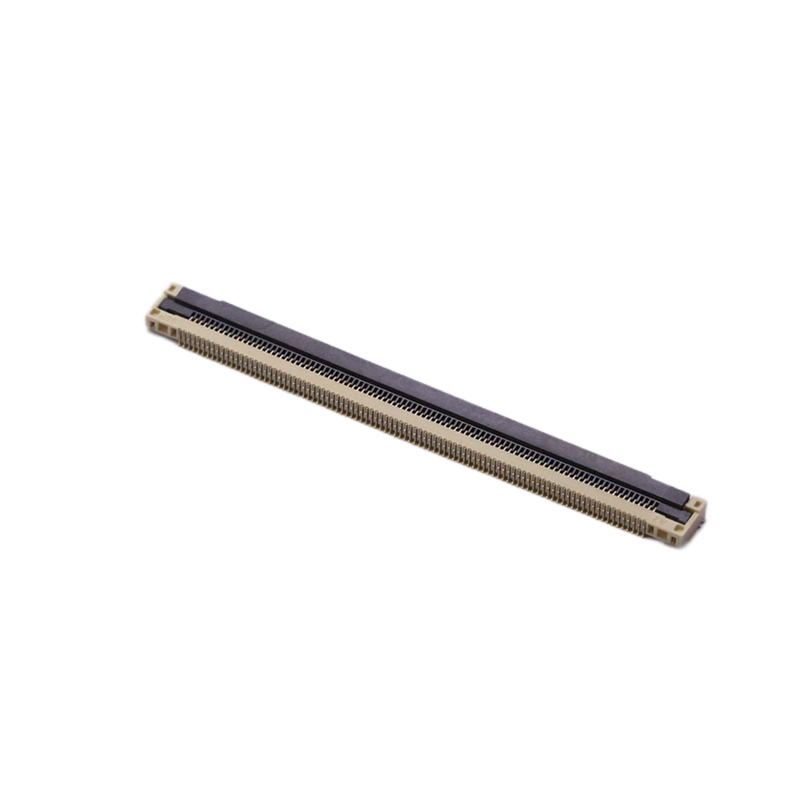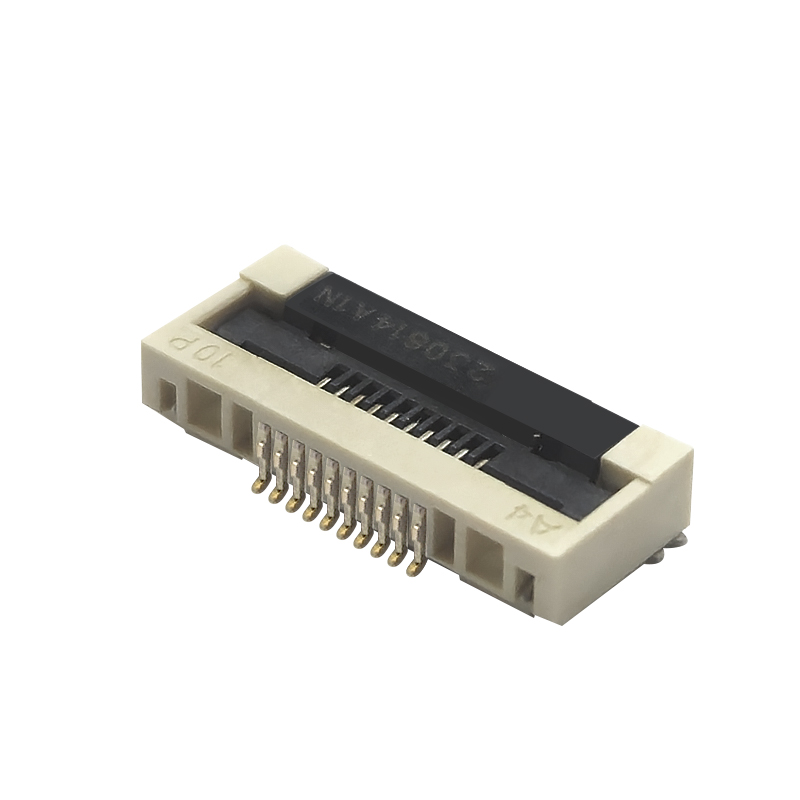In today’s world of cutting-edge electronic devices, connectors are the unsung heroes that keep everything running smoothly, especially in compact and wearable gadgets. As a trusted provider of innovative connector solutions, Konnra helps meet the growing demand for reliable, high-performance connections. When it comes to flexible connections, FFC (Flexible Flat Cable) connectors and FPC (Flexible Printed Circuit) connectors are two popular options, each with its own strengths. Let’s dive into what sets these two apart and how to choose the right one for your next project.
1. What is an FFC Connector?
FFC connectors link to FFC cables, which consist of parallel wires encased in flat, flexible plastic. Due to their flexibility, light weight, and low cost, FFC cables are widely used in small electronic devices.

1.1 Basic Structure of FFC Cables
FFC cables typically have two components:
Conductive material: Usually copper or another conductive metal, which transmits electrical signals.
Insulating material: A plastic, such as polyester (PET), wraps the wires to provide insulation and protection.
FFC connectors connect these cables to circuit boards or other modules, ensuring stable signal transmission.
1.2 Advantages of FFC Connectors
Low cost: FFC cables and connectors are inexpensive to produce, making them ideal for mass production.
Easy installation: Most FFC connectors are solder-free, requiring only cable insertion and locking.
High flexibility: FFC cables are highly flexible, making them suitable for applications that require bending, like laptop displays and car dashboards.
1.3 Application Scenarios of FFC Connectors
Due to their lightweight and flexible nature, FFC connectors are used in consumer electronics like smartphones, printers, appliances, and displays. FFCs work well in devices where compact design and high signal density are essential.
2. What is an FPC Connector?
FPC connectors connect to FPC circuits, which are flexible printed circuit boards made by etching copper foil onto a flexible substrate like polyimide. FPC circuits can transmit electrical signals and integrate more complex functions, such as embedded sensors or resistors.

2.1 Basic Structure of FPC Circuits
FPC circuits are more complex than FFC cables and usually include:
Conductive layers: One or more layers of copper foil that transmit current and signals.
Substrate layer: Typically polyimide, providing heat resistance and flexibility.
Protective cover: A layer that insulates and protects the conductive traces, enhancing durability.
FPC connectors connect these precise circuits to systems that demand higher electrical performance.
2.2 Advantages of FPC Connectors
High integration: FPC boards can include more components, making them suitable for complex systems.
Better stability: FPC connectors, made from higher-quality materials, offer superior signal integrity in high-performance environments.
Design flexibility: FPCs allow multilayer design and customization, supporting complex circuit designs.
2.3 Application Scenarios of FPC Connectors
FPC connectors are common in electronics with higher electrical demands, such as cameras, medical devices, aerospace products, automotive electronics, and wearables. They are ideal for compact devices that require highly reliable connections.
3. Key Differences Between FFC and FPC Connectors
Although FFC and FPC connectors both connect flexible cables or circuits, they differ in several significant ways.
3.1 Structural and Material Differences
FFC cables: Made of parallel wires covered with plastic, these are simpler in structure, suitable for basic signal transmission. FFC emphasizes flexibility and low cost.
FPC circuits: More complex, with copper foil layers and substrates that support additional functions. FPCs offer better electrical performance and design options.
This structural difference gives FPC better electrical properties, while FFC excels in affordability and simplicity.
3.2 Application Scenarios
FFC connectors: Best for simple signal transmission in devices like display screens and printers. They fit well in mass-produced consumer electronics.
FPC connectors: Ideal for systems that require higher electrical performance or complex circuit design. They are used in high-end electronics and demanding environments.
3.3 Cost and Design Flexibility
Cost: FFC cables are less expensive to produce, making them a cost-effective solution for many devices.
Design flexibility: FPC circuits are highly customizable and can be multilayered, making them suitable for more complex systems.
3.4 Signal Transmission Performance
FFC connectors: Designed for simpler signals, FFC cables may not handle high-frequency signals as effectively as FPC circuits.
FPC connectors: Provide superior signal transmission and perform better in complex systems that require high-frequency data transfer.
4. How to Choose the Right Connector?
Choosing between FFC and FPC connectors depends on several factors:
4.1 Application Requirements
If cost and simplicity are your primary concerns, as in consumer electronics or household appliances, FFC connectors are a suitable choice.
If your product requires higher electrical performance and greater functionality, FPC connectors are the better option.
4.2 Design Complexity and Flexibility
FFC connectors suit standardized designs where the cables are flat, straight, and require consistent spacing. They are ideal for mass production.
FPC connectors support customized designs, especially in complex systems that integrate sensors or control modules.
4.3 Reliability and Environmental Adaptation
For high-reliability applications, like automotive electronics or aerospace, where devices operate in harsh environments, FPC connectors provide better durability and signal stability.
5. Conclusion
Both FFC and FPC connectors serve critical roles in modern electronics. FFC connectors, with their cost-effectiveness and simplicity, are widely used in consumer electronics, while FPC connectors, with their higher integration and flexibility, suit more complex, high-performance applications.
Connector supplier must choose connectors based on their specific application needs, considering factors such as cost, performance, and design complexity. Understanding these differences will help create competitive, reliable electronic products that meet market demands.
Whether opting for FFC or FPC connectors, knowing their distinct characteristics allows for better decision-making and optimized product design.









